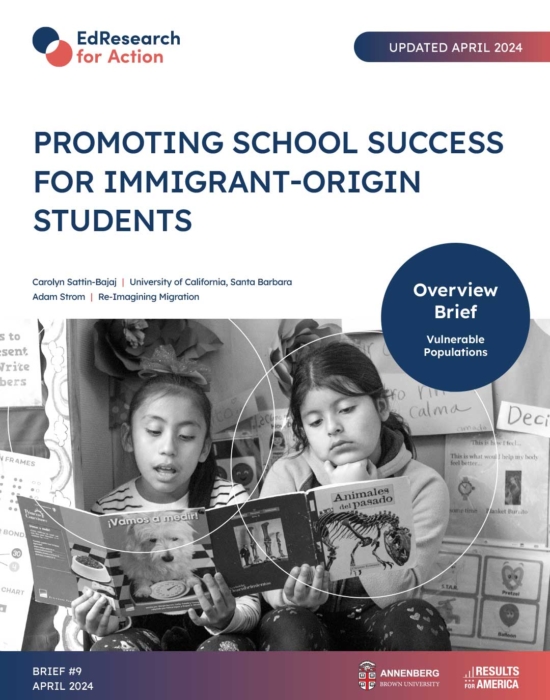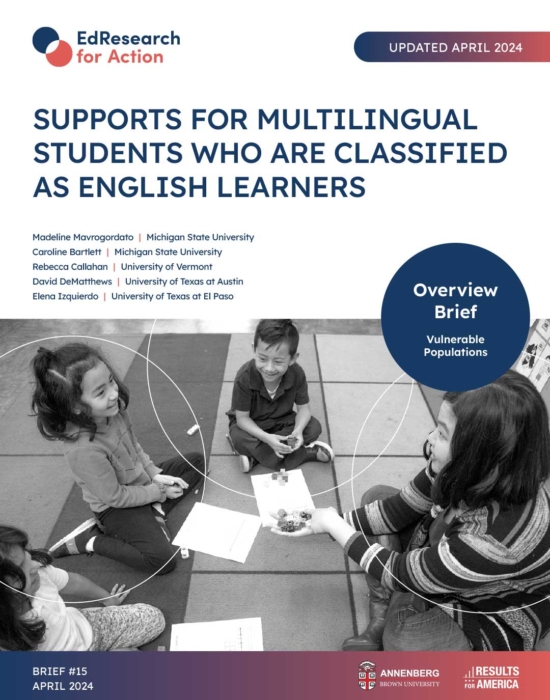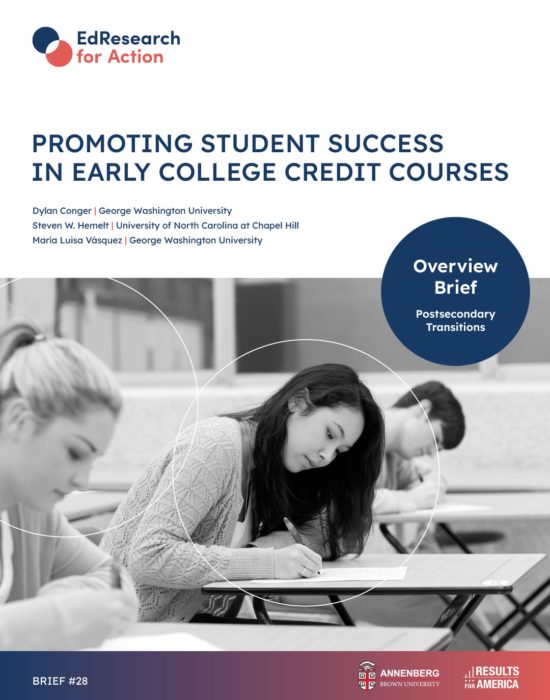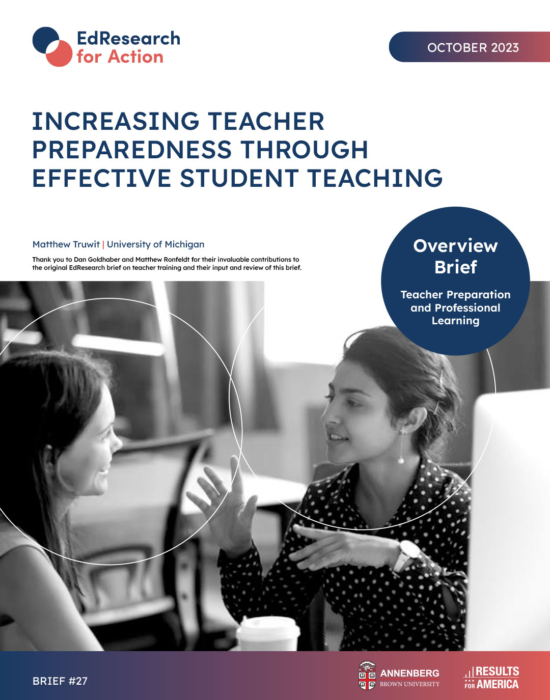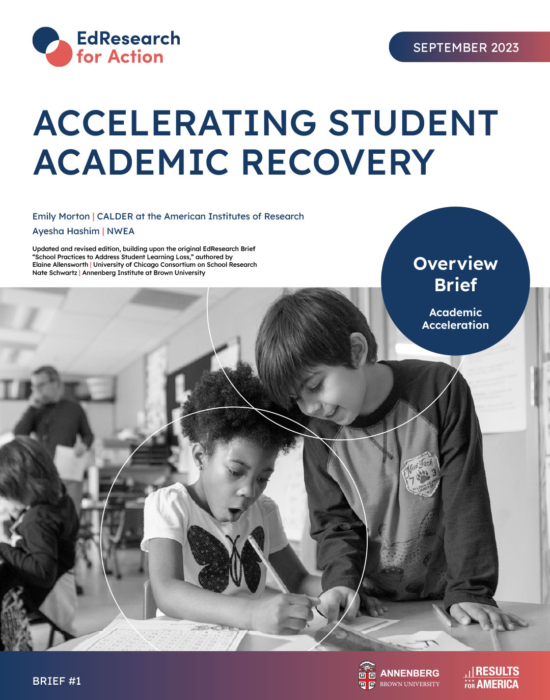EDUCATIONAL PRACTICES TO IDENTIFY AND SUPPORT STUDENTS EXPERIENCING HOMELESSNESS
The EdResearch for Action Overview Series summarizes the research on key topics to provide K-12 education decision makers and advocates with an evidence base to ground discussions about how to best serve students. Authors – leading experts from across the field of education research – are charged with highlighting key findings from research that provide concrete, strategic insight on persistent challenges sourced from district and state leaders.
Alexandra Pavlakis | Southern Methodist University
J. Kessa Roberts | Utah State University
Meredith Richards | Southern Methodist University
Kathryn Hill | Research Alliance for NYC Schools at New York University
Zitsi Mirakhur | University of Kentucky
November 2023 | Brief No. 5
Central Question
What evidence-based practices can schools and districts implement to identify and support students experiencing homelessness?
Key Insights
Breaking Down the Issue
- Students experiencing homelessness tend to have lower attendance and academic achievement than similar low-income students, and academic outcomes vary widely based on residential context.
- Homelessness poses significant socioemotional risks, including higher rates of mental health problems, such as depression, anxiety, and suicide risk, along with elevated vulnerability to abuse and exploitation.
Evidence-Based Practices
- Training school staff on students’ legal and educational rights and signs of homelessness is crucial to identifying and supporting students experiencing homelessness and is required by McKinney-Vento.
- Ongoing staff training in trauma-informed practices and anti-racist pedagogy can create a more supportive environment where students and families are more likely to self-identify as experiencing homelessness.
- Carefully designed and intentional collaborations and data sharing between schools and community providers can improve identification and ease access to resources for families.
- Regular communication with student-identified trusted adults allows schools to tailor practices to meet individual student needs and improve outcomes.
- Technology-based service delivery can benefit students, schools, and community organizations if districts ensure equitable access to these services.
Practices to Avoid
- Deficit-oriented and stigmatizing practices may have adverse short- and long-term consequences for students and their families.
Breaking Down the Issue
What does it mean for a student to be considered “homeless”?
Students may become homeless due to a number of factors, including economic challenges like poverty, job loss, or family health issues, as well as natural disasters and the escalating cost of housing.
The McKinney-Vento Homeless Assistance Act defines students experiencing homelessness as those who lack a “fixed, regular, and adequate” nighttime residence. This may include, but is not limited to 1) Sharing housing or living “doubled up” with someone else due to economic hardship or loss of housing; 2) Living in motels, hotels, trailer parks, or campgrounds; 3) Living in an emergency or transitional shelter or youth who are abandoned in a hospital, prison, or a juvenile detention facility; and 4) Living in a place not meant for human habitation, such as a car, park bench, or on the streets. Contrary to stereotypes about homelessness, the vast majority of students experiencing homelessness (77%) live in doubled-up situations. Migrant students who meet these definitions would also qualify.
McKinney-Vento, originally passed in 1986 but amended several times thereafter, is the core federal legislative response to student homelessness. The Act grants various rights to students experiencing homelessness. These may also include, if applicable, special education services or English language support. Students are also eligible to receive transportation to and from school, access to extracurricular activities, and the ability to attend their original school even if they’ve moved away. It also mandates the appointment of Education Liaisons in school districts to raise awareness of these rights. While it has limitations, McKinney-Vento has evolved over time to offer significant educational rights to identified students experiencing homelessness.
How prevalent is student homelessness?
The number of students identified as homeless has increased since the early 2000s, although these changes can be explained at least in part by improvements in identification. Between the school years of 2004-5 and 2018-19, there was a 111.6% increase in the number of homeless students enrolled in public school districts and reported by state educational agencies.
In the 2021-22 school year, an estimated 1.2 million public school children (about 2% of total students) were identified as homeless. However, between 2018-19 and 2021-22, the number of students experiencing homelessness in public schools decreased by 13%, from 1.38 million to 1.2 million, despite only a 2.6% decrease in overall public school enrollment.
Several factors may explain this decline, including COVID-19-related eviction moratoriums and economic support from the American Rescue Plan. It is important to note that this observed decline may also be attributable to the under-identification of students experiencing homelessness during the pandemic, as stay-at-home orders and shifts in schooling modality made identification more challenging. Moreover, some families may not self-identify as homeless due to stigma, fear, racism, or unawareness of McKinney-Vento Act definitions (such as the inclusion of “doubling up”), particularly if they are experiencing homelessness for the first time. There are some early signs that major US urban areas are experiencing a rise in homelessness among families due to the phase-out of COVID-19 supports and the influx of migrant families in a number of cities. Geographically, reports of student homelessness vary, with the Bureau of Indian Education, the District of Columbia, and New York reporting the highest rates (6% each), while Connecticut, Rhode Island, Nebraska, New Jersey, and Puerto Rico report less than 1% of students in homeless situations. However, it’s crucial to note that these figures represent reported cases, and identification issues exist across all states. Importantly, student homelessness is not limited to large cities; it can also be concentrated in suburbs and rural areas, where homelessness can be less visible due to gaps in social services.
Homelessness tends to affect already marginalized students disproportionately. Students with disabilities, English learners, Black, Hispanic, and LGBTQIA youth are overrepresented among students experiencing homelessness. For instance, Black students (15% of all students) accounted for 24.3% of students experiencing homelessness, and Hispanic students (28.4% of all students) comprised 39.4%. National data highlight that students who qualify for special education and English language services are also over-represented among those experiencing homelessness.
What do we know about the academic and socioemotional outcomes of students experiencing homelessness?
Students experiencing homelessness tend to have lower attendance and academic achievement than similar low-income students, and academic outcomes vary widely based on residential context.
- Students experiencing homelessness tend to change schools frequently. Evidence consistently suggests that such mobility disrupts academic learning and relationships, especially when it is frequent and poverty-related. In addition, schools with high rates of students who move face unique challenges when implementing school reform.
- A recent report found that almost 60% of students experiencing homelessness in New York City were chronically absent (relative to 32% of their peers who did not experience homelessness). Further, these analyses showed that roughly one-quarter of students experiencing homelessness were proficient on state math and English tests in 4th grade – about half the rate of permanently housed students.
- Given that students experiencing homelessness are a highly diverse group, evidence suggests that academic outcomes vary substantially. For example, a recent study in Houston found that students experiencing homelessness who lived “doubled up” performed as well on state tests in math and reading as their housed peers. However, students residing in unsheltered contexts performed substantially worse than their peers in reading. The number of cumulative years of prior homelessness also seems to contribute negatively to students’ academic performance.
- Local and state variations greatly influence homeless students’ academic outcomes, complicating cross-regional comparisons. Studies in California, Louisiana, Minnesota, and Washington show similar or worse educational risks for students living in motels or temporarily living with extended family or friends compared to those in shelters or without shelter, contrasting findings from research conducted in Houston.
- It is important to note that quantitative analyses of academic outcomes of students experiencing homelessness are still relatively rare and have methodological limitations. They are generally limited to specific states or districts, do not consistently account for the complex dynamics of homelessness, and may lack control variables or appropriate comparison groups.
Homelessness poses significant socioemotional risks, including higher rates of mental health problems, such as depression, anxiety, and suicide risk, along with elevated vulnerability to abuse and exploitation.
- The instability and stress associated with homelessness can take a toll on students’ mental health. Students experiencing homelessness are at significantly higher risk of suicide and other mental health problems, including depression, anxiety, and adverse childhood experiences (ACEs).
- Housing-insecure youth and families also report higher rates of physical and emotional abuse and financial exploitation. They are even vulnerable to sex trafficking while staying in shelters, on the streets, and “doubled-up” with acquaintances, family, or strangers.
Evidence-Based Practices
What does the research say about effective ways to support students experiencing homelessness?
Training school staff on students’ legal and educational rights and signs of homelessness is crucial to identifying and supporting students experiencing homelessness and is required by McKinney-Vento.
- An important component of this training is providing a general overview of trends in homelessness and underscoring the heterogeneity in the experience of housing instability and/or loss. Further, sharing resources like Know Your Rights materials can empower educators to address students’ concerns and fears, fostering a sense of security.
- To make enrollment accessible for students and families who cannot use online methods, schools can offer alternatives such as in-person enrollment at school sites, enrollment by phone during school closures, and wide dissemination of information on how to enroll in person.
- Schools can proactively provide opportunities for family members to update housing forms during the year at parent-teacher conferences or by sending forms home with students. Non-instructional staff, such as social workers, can also support identification through proactive outreach to families about their housing situation. Tip sheets for school nurses, transportation managers, guidance counselors, parent support personnel, and office assistants can help foster a culture of care.
Ongoing staff training in trauma-informed practices and anti-racist pedagogy can create a more supportive environment where students and families are more likely to self-identify as experiencing homelessness.
- Experts in youth trauma recommend employing trauma-informed approaches to support students who may have experienced trauma before or after experiencing homelessness. Trauma screenings and evidence-based care are vital components to enhance the quality of education and care for these students.
- Culturally relevant learning opportunities are essential for sustained engagement and are associated with higher achievement. Anti-racist, critical pedagogical practices better position schools to foster a climate where students and families feel comfortable self-identifying.
- The use of resources (such as those on how to talk about homelessness to students and those in which students can see their own experiences reflected) can help students and families feel more comfortable in self-identifying as homeless and help school staff support the socio-emotional needs of these students and families.
Carefully designed and intentional collaborations and data sharing between schools and community providers can improve identification and ease access to resources for families.
- Partnerships between schools and community organizations that predated COVID-19 were particularly useful in meeting student needs during the pandemic.
- If possible, schools are encouraged to inventory the availability of these services for all students and particularly for students experiencing homelessness who may experience higher levels of social isolation than their stably housed peers. At a minimum, it is important for school staff to have clear referral systems, especially when students need support from organizations or individuals outside their school.
- Collaboration and data sharing with community providers can improve the identification of students experiencing homelessness and access to resources and supports for families. For example, in 2016, the New York City Department of Education and Department of Homeless Services changed their data-sharing agreement so that the Department of Education now receives daily lists of students in shelters instead of monthly rosters. In turn, the Department of Homeless services receives information about students’ attendance, grade advancement, and disciplinary incidents, which are useful to shelter staff in their case management strategies.
- Information sharing can also include the pooling of knowledge about local policies or events (e.g., the destruction of a local low-income housing complex or closure of a school), increasing families’ access to educational information by posting on-site at community organizations or using national data, such as the results of the Youth Risk Behavior Survey or federal data summary reports to inform local decision-making.
- Building relationships with community providers can reduce silos and help meet service needs while minimizing duplication. These relationships may take a wide variety of forms, ranging from referrals to broader models of wraparound services or community schools. School and district staff can play varying roles in brokering resources for families experiencing homelessness. At the school level, social workers, teachers, and principals can handle registration, enrollment, and immediate needs. District-level personnel can facilitate transportation and community-wide professional development. It is important to consider that the ability of organizations to identify and support students experiencing homelessness depends on neighborhood factors such as immigration and housing trends.
Regular communication with student-identified trusted adults allows schools to tailor practices to meet individual student needs and improve outcomes.
- Research recommends that school and community stakeholders incorporate the expertise of youth and the student-identified network of trusted adults, such as parents, cousins, coaches, mentors, afterschool providers, or religious leaders, in students’ academic planning. One study showed that positive relationships with teachers, strong connections to peers, and attending church were essential sources of support for students who graduated high school while also experiencing homelessness.
- Healthy partnerships with families experiencing homelessness may depend on communicating regularly with parents to share positive news about students’ progress and actively seeking insights into their strengths and needs. To do this, families must have the technological connectivity to remain engaged with schools and their support networks through free WiFi or prepaid phones.
Technology-based service delivery can benefit students, schools, and community organizations if districts ensure equitable access to these services.
- Virtual delivery, when possible, may enable continuity of services, even as highly mobile students change schools or residences.
- Technology can also reduce barriers to access, such as transportation and childcare, and minimize the stigma associated with being seen accessing services in person at the organization’s physical location.
- Virtual meetings can save time and resources for service providers, allowing providers to reach more students, particularly those in remote areas, and offer flexible scheduling.
- To ensure equitable access to technology-based services, schools should not assume students have the necessary technology and should provide devices and internet connectivity, including insurance, at no cost. Furthermore, students experiencing homelessness may lack private spaces for virtual meetings, so schools and shelters should allocate safe spaces and time for them to access virtual services.
Practices to Avoid
What strategies have been proven ineffective?
Deficit-oriented and stigmatizing practices may have adverse short- and long-term consequences for students and their families.
- Stigmatizing practices targeting students experiencing homelessness, such as separate bus routes or homework assignments, can harm confidentiality and well-being and discourage students and families from sharing information with school staff.
- Research suggests that marginalizing the role of race and its complex interactions with social class can be particularly psychologically damaging to students of color experiencing homelessness and may hinder them from accessing services.
- While many anti-poverty strategies may also apply to the contexts of homelessness, one-size-fits-all solutions that assume all students and families experience homelessness in the same way, have the same needs, or treat homelessness as an identity rather than an experience, are unlikely to effectively meet the diverse needs and assets of students experiencing homelessness.
- With few exceptions, segregation by housing status is not permissible under federal law and is linked to damaging outcomes for students.
Relying on in-person encounters with parents or assuming parents will initiate contact with the school to access services is insufficient, especially for homeless unaccompanied minors.
- With the shift to virtual learning due to COVID-19, educators and service providers recognized the importance of being data-driven, proactive, and intentional in their outreach to families. While reaching out to families was often challenging, those who made purposeful and proactive efforts discovered that it fostered stronger relationships between families and the school.





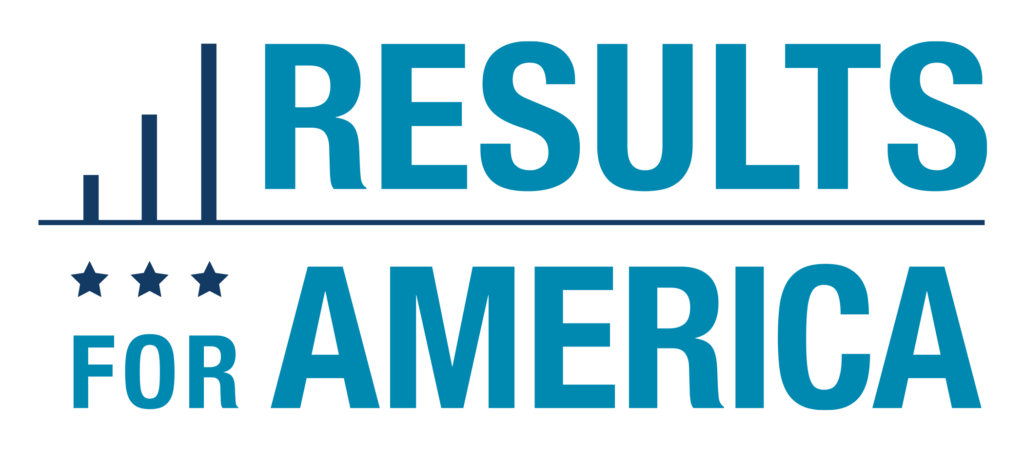
Funding for this research was provided by the Bill & Melinda Gates Foundation. The findings and conclusions contained within are those of the authors and do not necessarily reflect positions or policies of the foundation.

